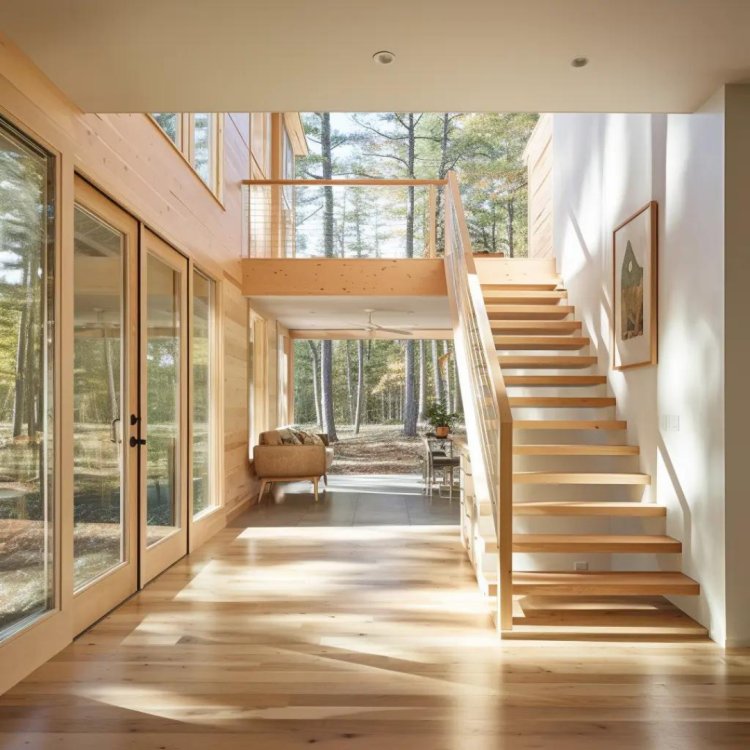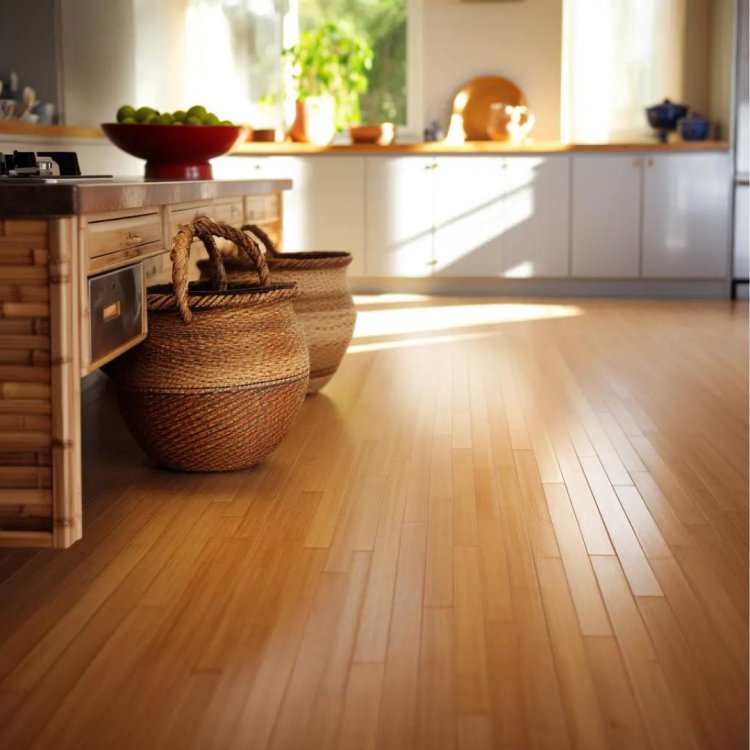Eco Friendly| Renovations| Eco Home
Discover eco-friendly renovations and ideas for creating an eco home in this detailed article. Learn how to make your home more sustainable and environmentally friendly.
Eco Friendly| Renovations| Eco Home
With over 10 years of experience in building and renovating homes, we, at Ecohome, have made it our mission to help homeowners navigate the complex world of sustainable home improvements. Whether you're planning a full-scale eco home renovation or looking to make small eco-friendly adjustments, this guide is designed to provide you with the information you need to make your home more sustainable and valuable, and we have a bunch of other eco-friendly renovation ideasthat you can get started with today. The benefits of sustainable remodeling are endless, but where do you begin? Let’s start with the basics.

Energy-Efficient Windows and Doors
Improving your home's energy efficiency often starts with the basics: windows and doors. Traditional windows and doors can be a significant source of heat loss in the winter and heat gain in the summer. Upgrading to energy-efficient models can help maintain a consistent temperature in your home, reducing your reliance on heating and cooling systems.
Energy-efficient windows often come with special coatings that reflect infrared light, keeping heat inside in the winter and outside in the summer. They also have improved frames and multiple panes of glass filled with gases like argon or krypton for better insulation. Similarly, energy-efficient doors are designed with materials like fiberglass or steel and are filled with an insulating foam. They often include a magnetic strip for improved sealing, reducing drafts, and air leakage.
When choosing energy-efficient windows and doors, look for the Energy Star label, which certifies that the product meets government standards for energy efficiency. Also, consider factors like the U-factor (how well the product prevents heat from escaping) and the Solar Heat Gain Coefficient (how well the product blocks heat caused by sunlight).
While the initial cost of these windows and doors may be higher, the savings on energy bills over time make this a worthwhile investment in your home's sustainability and value.

Harnessing the Power of the Sun: Solar Panels
Solar panels offer a powerful way to reduce your home's carbon footprint. By converting sunlight into electricity, solar panels provide a renewable source of energy that can significantly reduce your reliance on the grid and lower your energy bills.There are various types of solar panels, but the most common ones used in homes are monocrystalline, polycrystalline, and thin-film solar panels. Each has its own advantages, cost, and efficiency rate.
Installing solar panels involves planning the right location (usually rooftops, open landscapes), determining the correct tilt and orientation, and selecting the right type and number of panels needed to match your energy consumption. It's also important to check local laws and regulations, as some areas require permits or have restrictions for solar panel installations. While the upfront cost of solar panels can be substantial, various federal and state incentives, along with the potential for long-term energy savings, make solar panels a smart investment.
Green Roofing: A Living Canopy
Green roofs represent a unique and innovative approach to sustainable home renovation. By covering your roof in vegetation, you not only add visual appeal but also create an extra layer of insulation and help to reduce stormwater runoff. There are two types of green roofs: extensive and intensive. Extensive green roofs have a thin layer of soil and are planted with hardy, low-growing plants. They are lighter and require less maintenance. Intensive green roofs, on the other hand, have a thicker layer of soil that can support a wider variety of plants, including shrubs and trees, but they are heavier and require more maintenance.
Besides providing insulation, green roofs help to reduce the heat island effect, improve air quality, and create a habitat for wildlife. Moreover, they can extend the lifespan of your roof by protecting it from weather-related wear and tear.Installation of a green roof involves multiple steps, including waterproofing your existing roof, installing a root barrier, setting up drainage and irrigation systems, and then laying the soil and plants. Due to the complexity of the installation, it's usually recommended to work with a professional. Seeing a roof come alive with greenery can be rewarding, not just for the aesthetics but also for the multitude of environmental benefits it offers.
Energy-Efficient Appliances and Fixtures
Investing in energy-efficient appliances and fixtures is another straightforward way to improve your home's sustainability. Energy-efficient appliances use less electricity to perform the same functions as their conventional counterparts, which can lead to significant savings on your energy bills over time. Particularly in a sustainable kitchen remodel
When shopping for appliances, look for the Energy Star label, which indicates that the appliance meets certain energy efficiency standards set by the Environmental Protection Agency. Energy Star-rated appliances are available in a vast range, including refrigerators, washers, dryers, dishwashers, and more.Similarly, replacing your regular fixtures with low-flow fixtures in a bathroom remodel can help reduce your water usage. Low-flow showerheads, faucets, and toilets can provide the same level of utility while using significantly less water.
Another way to increase energy efficiency is by installing a smart thermostat.These devices can learn your schedule and preferences, adjusting the temperature when you're away or asleep to save energy.
Insulation and Sealing: The Hidden Heroes
Home insulation and sealing might not be the most glamorous part of home renovations, but they play a vital role in energy efficiency. Heat naturally flows from warmer to cooler spaces. In winter, this means heat moves directly from all heated living spaces to adjacent unheated attics, garages, basements, and outdoors. During the cooling season, heat moves from outdoors to the house's interior.
To maintain comfort, the heat lost in the winter must be replaced by your heating system and the heat gained in the summer must be removed by your air conditioner. Properly insulating your home will decrease this heat flow by providing an effective resistance to the flow of heat.
Start by insulating your walls, attic, and basement to prevent drafts and maintain a consistent temperature throughout your home. The type of insulation you'll need depends on the climate, type of your home, and your living habits. Common types of insulation include rolls and batts, loose-fill, rigid foam and foam-in-place.Sealing your home is equally important. This involves finding all the hidden cracks and crevices in your home and sealing them with caulk, foam, or weather stripping. The most common areas to seal include windows, doors, vents, and where cables and pipes enter your home.

Choosing Eco-Friendly Materials: Flooring, Countertops, and More
When undertaking an eco-friendly home renovation, choosing the right materials can make a significant impact. From eco-friendly flooring to sutainable countertop materials, there are a multitude of options available that combine environmental responsibility with style and durability.
When choosing your eco-friendly materials, consider both the source of the material and its life cycle. Opt for materials that are recycled, renewable, and sustainably sourced, and also consider the manufacturing process, durability, and end of life disposal.Choosing eco-friendly materials for your home renovation is more than just a trend.It's about making conscious choices that reduce our environmental footprint while creating a home that is healthy, comfortable, and beautiful. Let your home reflect your commitment to sustainability with these eco-friendly material choices.
Plan Your Budget with Ecohome
Eco-friendly home renovations are an investment in your future and the future of our planet. But let’s be realistic, budgets matter. At Ecohome, we understand the importance of planning and sticking to a budget for your renovation projects. That's why we offer a budget tool to help you estimate costs and manage expenses.With our tool, you can break down the costs of your renovation project, from materials and appliances to labor and permits. This allows you to plan your project effectively, ensuring that your green home improvements stay on track without any financial stress.
By implementing these sustainable upgrades, you'll not only create a healthier and more comfortable living environment, but also increase your home's value and appeal. Eco-friendly renovations are a win-win: they're good for the environment and good for you. Join the growing community of homeowners using Ecohome.co to make their homes more sustainable and valuable. Take the leap into eco-friendly living today and you won’t look back. Happy renovating!












